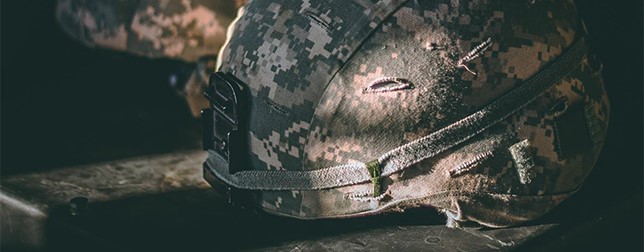Wearable technologies have been evolving in the most unexpected fields, yet whenever we think about wearables the first fields that come to our minds are healthcare, fitness, lifestyle and similar areas, right? Did you know that wearables in the military force is a sector that entails an enormous load of wearable novelties since the 80´s? Moreover – as reported by Questale – its sales is expected to grow by 45% until 2022. Still, the question here is not to decide whether it will bring more goods or harms, since this discussion can get pretty tricky depending on beliefs and conviction. What we aim with this article is to enlighten our readers on how the military scenario and the soldiers of the future might look like in the upcoming years.
Curious? Then be sure to keep reading it!
According to recent studies, wearable technologies will enable soldiers to either track and be tracked in real-time and great precision – which will ensure the safety of these soldiers as well as to diminish risk of failure in high-risked operations. In this respect, developing technologies that are discreet and can be carried along the soldier can be a life changer.
Norinco, a Chinese enterprise, is now developing a new generation of military exoskeletons. These will enable soldiers to carry over 100kg of supplies without much struggle since the soldier would have its strength powered up. Yet, this exoskeleton is not based on any surreal Terminator movie. In our past WT | Wearable Technologies Conference 2018 EUROPE, Ekso Bionics presented on stage an exoskeleton for industrial applications that supports workers to achieve physical movements, which were thought to be unachievable.
A system called Arielle, by ST Engineering, has been combining elements such as helmets embedded with smart-glasses, smart-clothing, bracelets, different sensors, cameras, smartwatches, you name it. These gears will change the daily-life of thousands of soldiers when it comes to: providing soldiers with AR images that will ease communication and coordinate tracking, body temperature tracking, long-lasting batteries for the most various devices, notifying colleagues with the probability of armed conflicts as well as day-night vision.
However, it is important to point out that when it comes to military every possible data generated by these gears is extremely sensitive. Companies and developers have to be positive that their technologies are safeguarded so that the soldiers will not have their identities revealed nor spotted by the general public.
In a nutshell, these wearables are not completely estranged from the wearables we are used to see on our daily-basis. We are simply not used to seeing them on our way to work or anywhere. Mostly important here is: they are out there and have been used as inspiration for many types of wearables that are familiar to many of us. Once we have more reports and news about the military wearables we will keep you posted since they have a great potential of shaping our current technologies and how we know it. In the meantime, stay tuned for more news!














